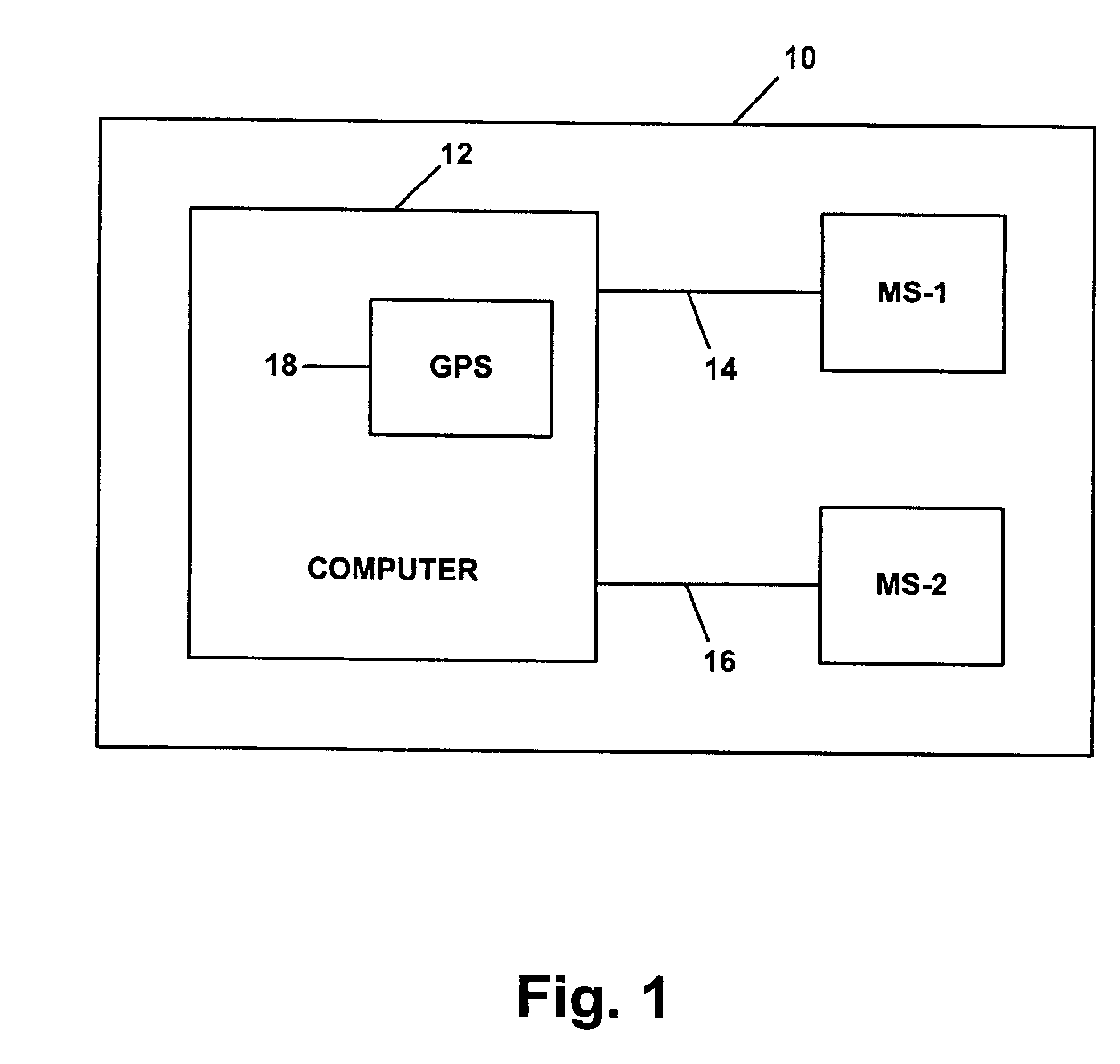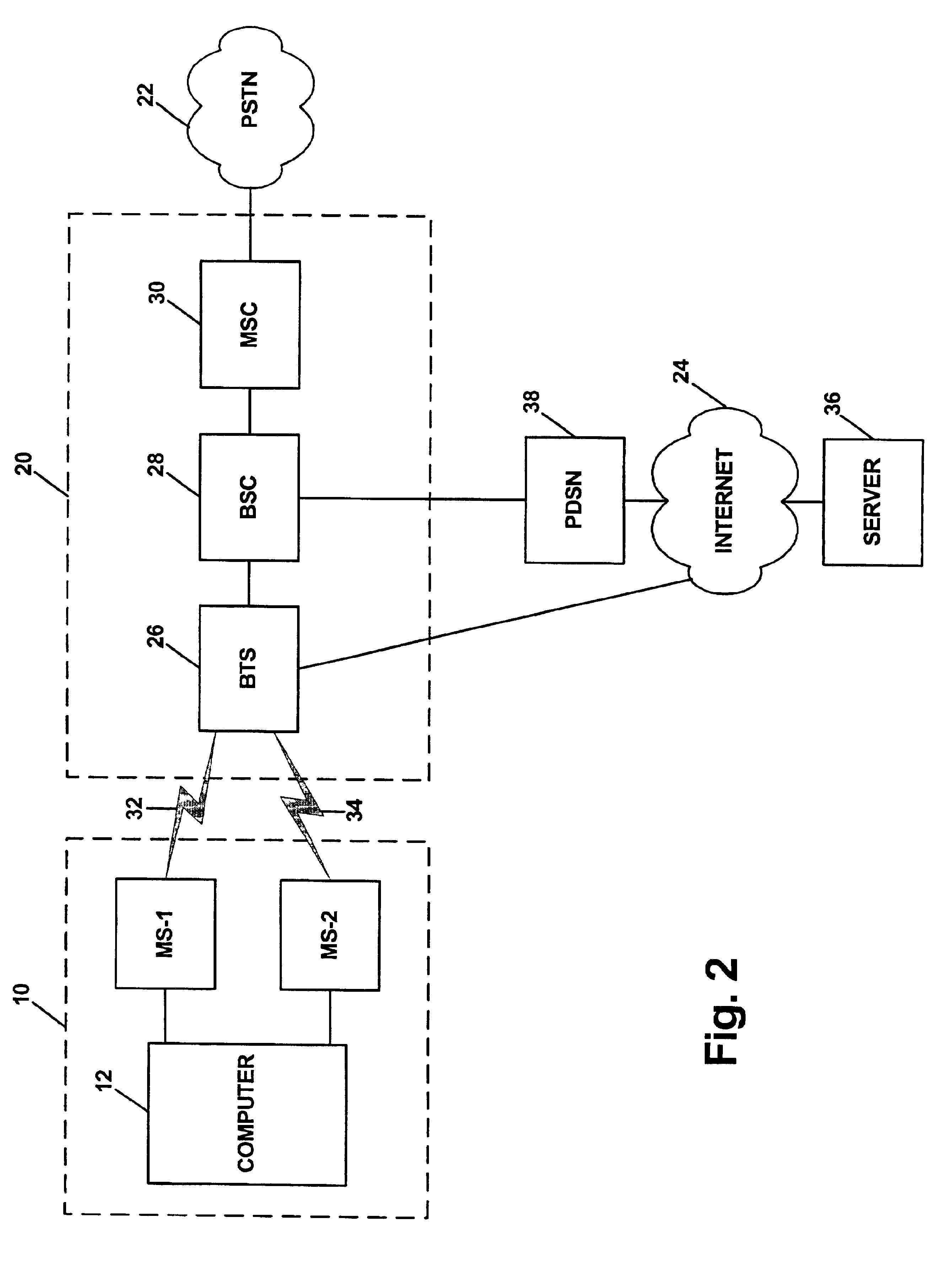Method and system for monitoring a wireless communications network
a wireless communication network and wireless communication technology, applied in the field of wireless telecommunications systems, can solve the problems of call quality decline, call loss, and increased likelihood of interference between mobile stations, and achieve the effects of convenient mounting, improved mdm arrangement, and convenient central analysis and reporting
- Summary
- Abstract
- Description
- Claims
- Application Information
AI Technical Summary
Benefits of technology
Problems solved by technology
Method used
Image
Examples
Embodiment Construction
1. Exemplary Architecture
[0022]Referring to the drawings, FIG. 1 is a simplified block diagram illustrating an MDM system 10 arranged in accordance with an exemplary embodiment of the present invention. As shown in FIG. 1, system 10 includes a first mobile station MS-1, a second mobile station MS-2, and a computer 12. MS-1 may be communicatively coupled with computer 12 by a link 14, and computer 12 may be communicatively coupled with MS-2 by a link 16. In this arrangement, MS-1 can provide information to computer 12 via link 14, and computer 12 can provide information to MS-2 via link 16.
[0023]As further illustrated, computer 12 preferably includes or is in communication with a location determining mechanism 18 that allows computer 12 to determine a position of MS-1. Location determining mechanism 18 may most conveniently be a global positioning system (GPS) transceiver, the arrangement of which is well known to those skilled in the art and therefore not described here. Alternative...
PUM
 Login to View More
Login to View More Abstract
Description
Claims
Application Information
 Login to View More
Login to View More - R&D
- Intellectual Property
- Life Sciences
- Materials
- Tech Scout
- Unparalleled Data Quality
- Higher Quality Content
- 60% Fewer Hallucinations
Browse by: Latest US Patents, China's latest patents, Technical Efficacy Thesaurus, Application Domain, Technology Topic, Popular Technical Reports.
© 2025 PatSnap. All rights reserved.Legal|Privacy policy|Modern Slavery Act Transparency Statement|Sitemap|About US| Contact US: help@patsnap.com



